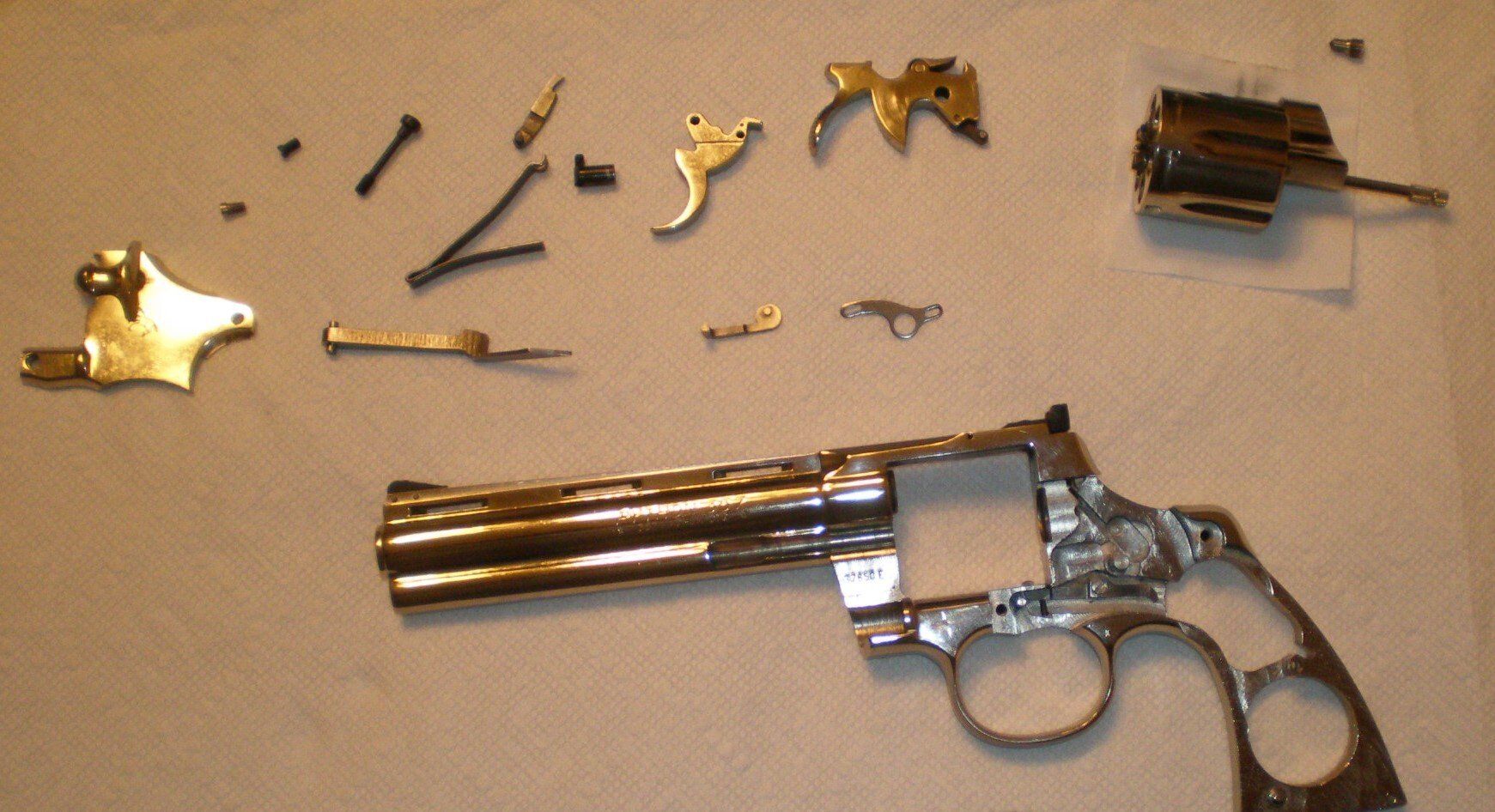HEFFRON PRECISION©
Osage, Iowa 50461
Phone: 1-641-732-0050
email: heffronprecision@outlook.com
Fine Custom Guns Since 1989
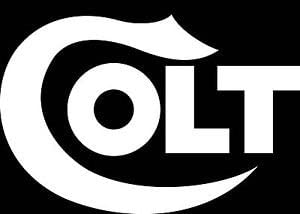
Slide title
Write your caption hereButton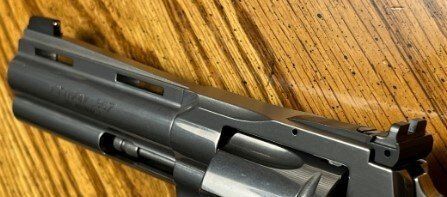
Slide title
Write your caption hereButton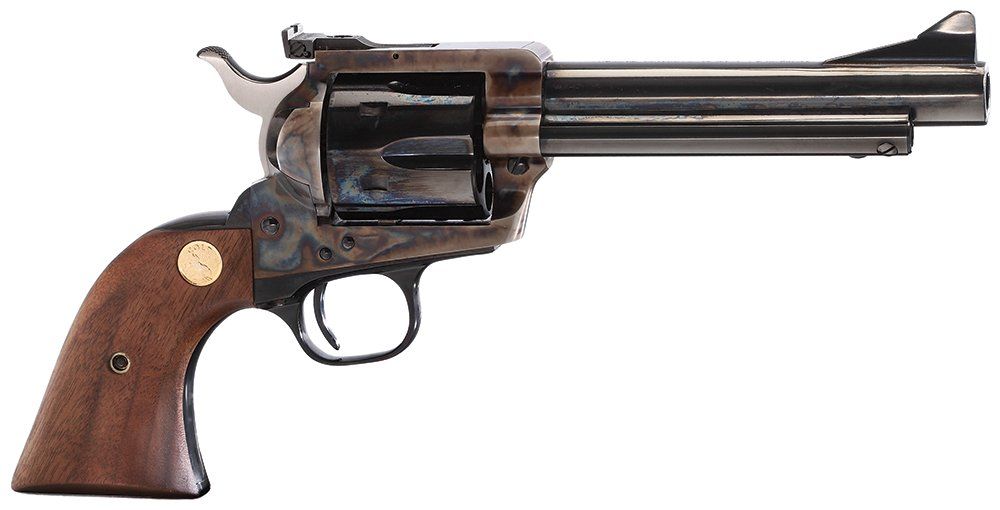
Slide title
Write your caption hereButton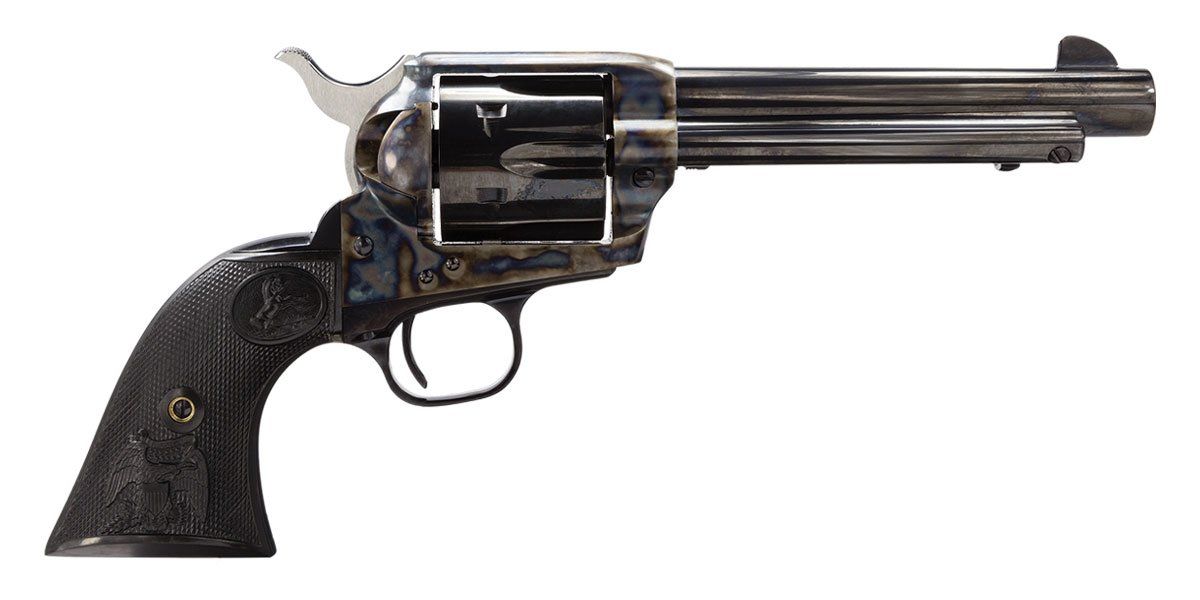
Slide title
Write your caption hereButton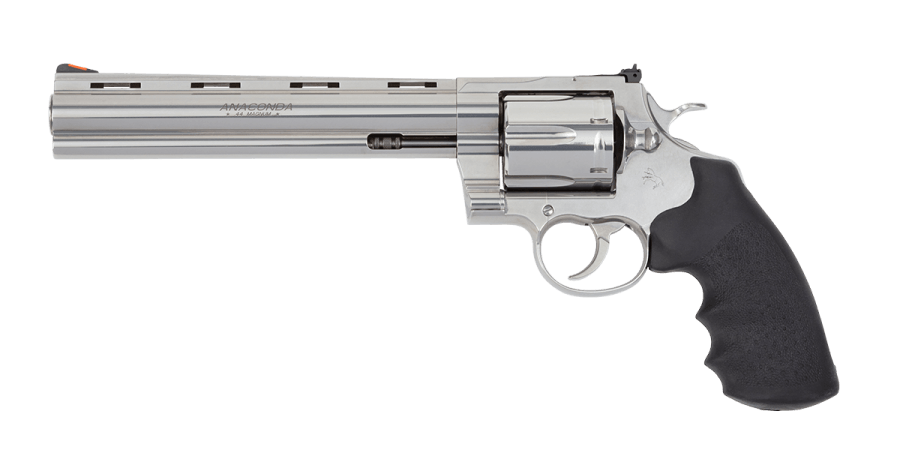
Slide title
Write your caption hereButton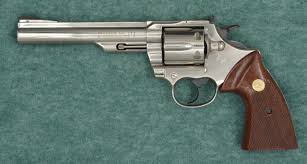
Slide title
Write your caption hereButton
Slide title
Write your caption hereButton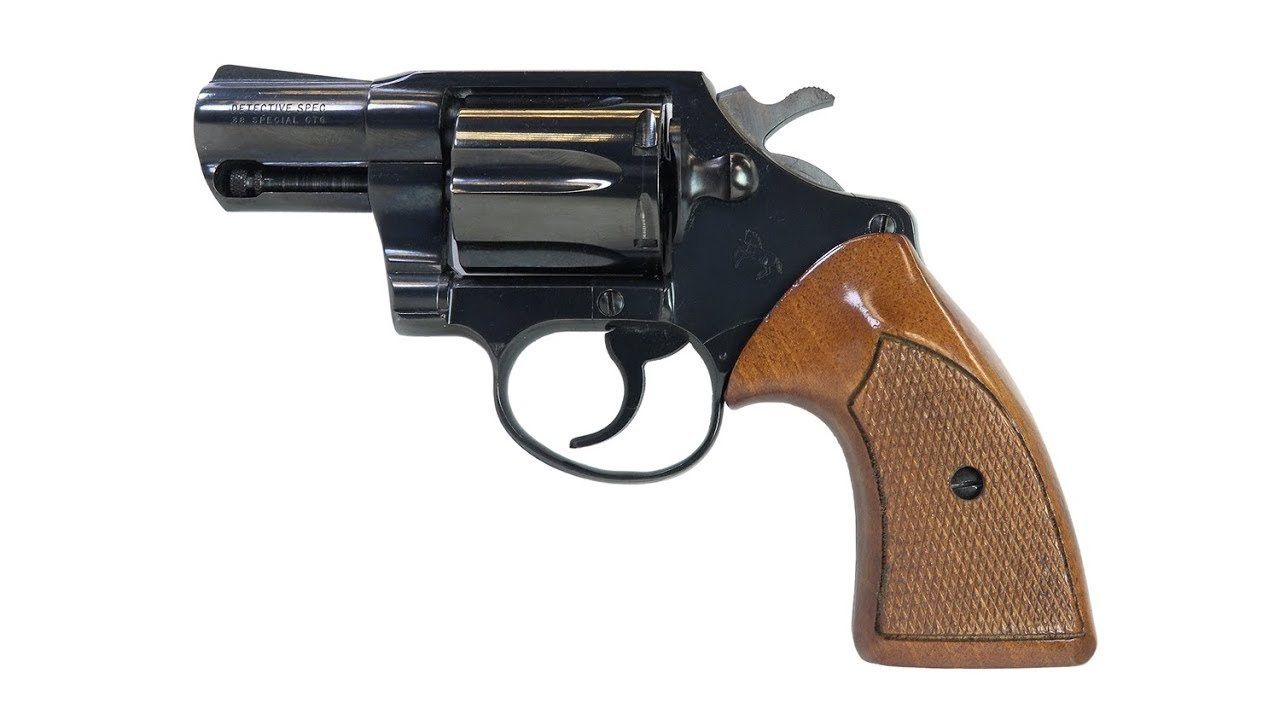
Slide title
Write your caption hereButton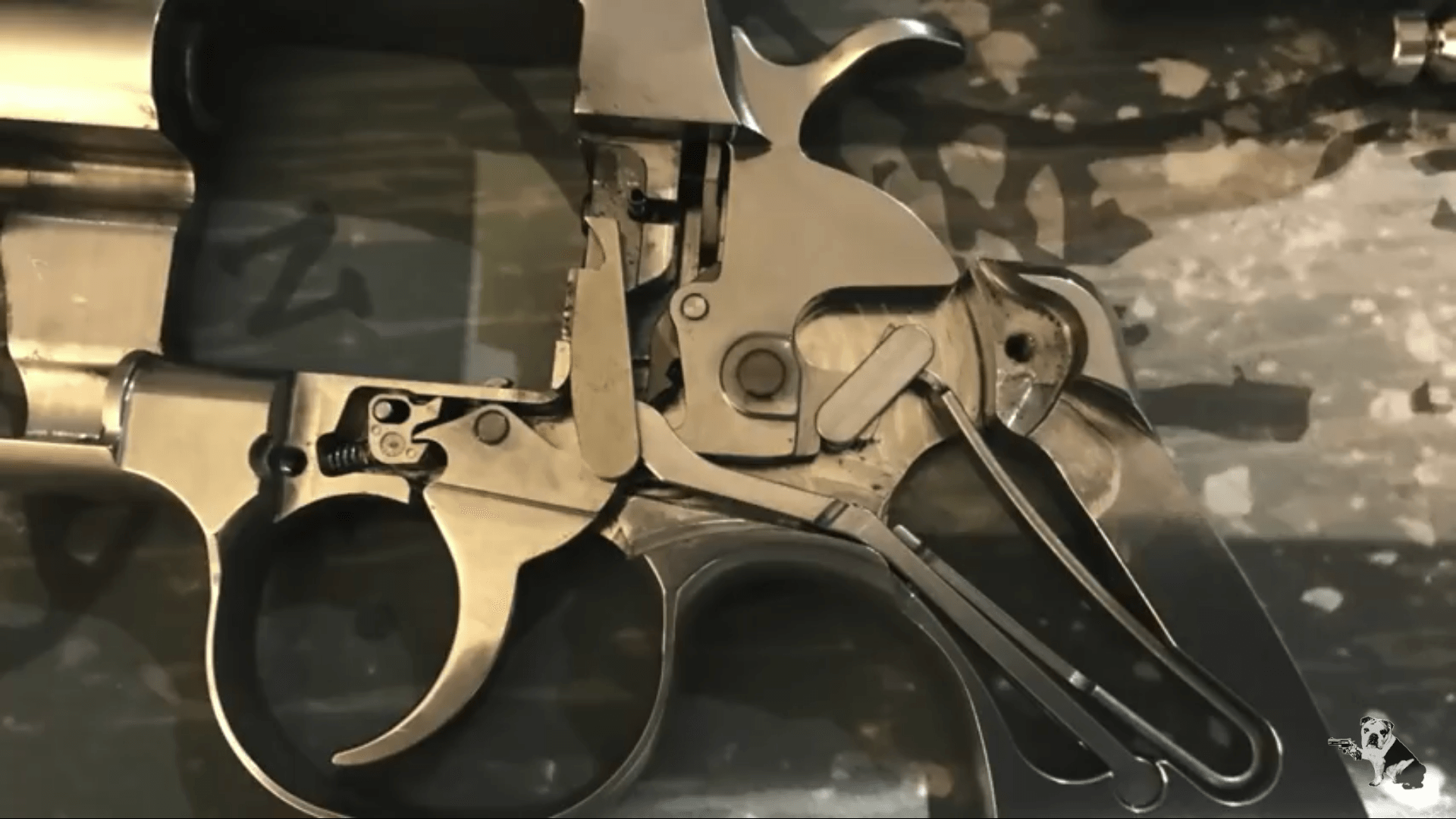
Slide title
Write your caption hereButton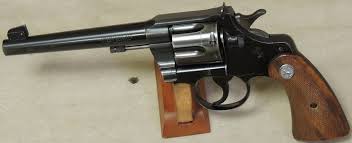
Slide title
Write your caption hereButton
Slide title
Write your caption hereButtonSlide title
Write your caption hereButton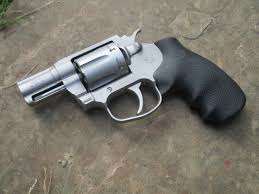
Slide title
Write your caption hereButton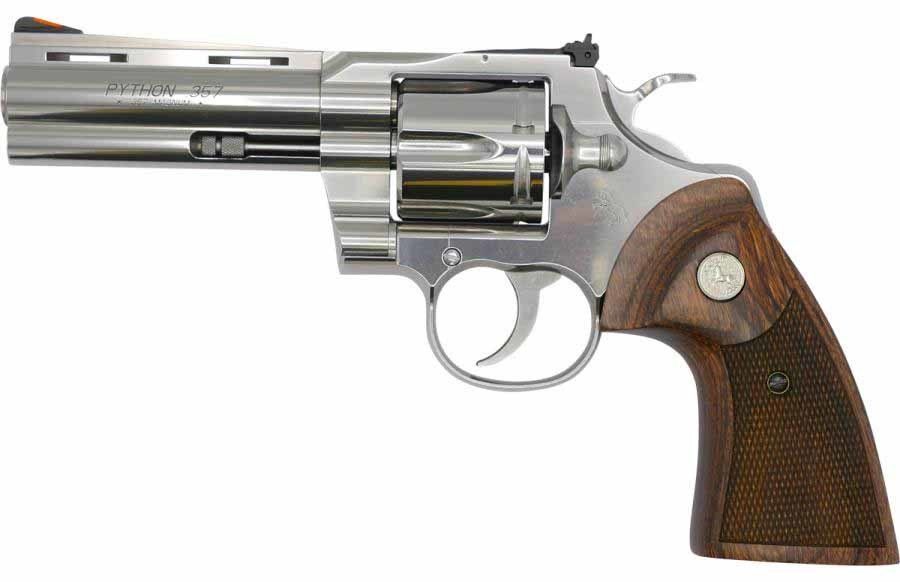
Slide title
Write your caption hereButton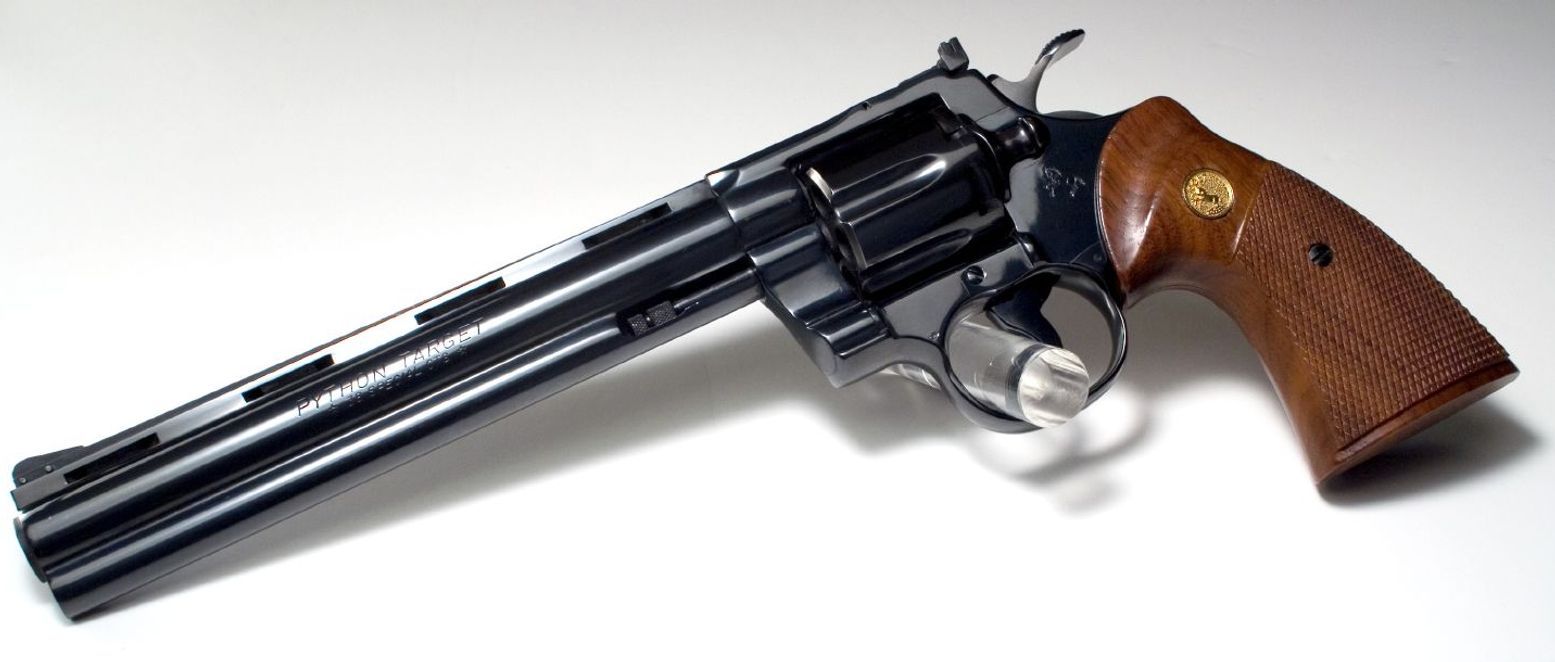
Slide title
Write your caption hereButton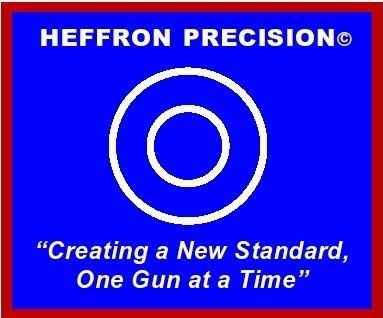
Slide title
Write your caption hereButton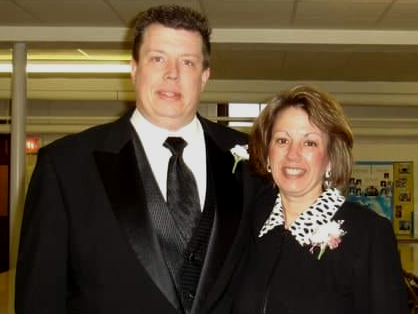
Slide title
Write your caption hereButton
HEFFRON PRECISION©
"THE BLOG"
Authored By: Mike Heffron
tips - reviews - editorials - status
3/26/2025: CHANGES AND ANNOUNCEMENTS AT HEFFRON PRECISION©:
I once heard that God will not give you more than you can handle. I also heard that if you pray for strength, God will present you with situations that will make you stronger. That one made me very hesitant to pray for strength! We have now experienced a new challenge at Heffron Precision© that I can handle and I have the strength to get through it, but it was unexpected and it's going to require a change of our business model.
You might remember last year when Dan, one of our Master Pistolsmiths had a stroke and is unable to return. He was a major asset to the company. I miss him for his skills, but also his wit, his intelligent sarcasm, and the contagious quality it all had. Now, we've had a sudden surprise take place in the from of Lawrence, our other Master Pistolsmith, retiring in a rather unexpected manner. I'm not in any way disparaging him. This is serious. His wife of over 40 years has been diagnosed with a long-term illness that is terminal. He needs to care for her. Lawrence will be very-much missed as well. He was always the mellow and calm voice of reason around this place. He is probably the most patient man I have ever known. Losing him is not at all a small deal. This leaves Heffron Precision© with me as the Engineer-Master Pistolsmith/Revolversmith-Main Coordinator, Matt as our Machinist, and my wife Tammy as the Bookkeeper-Shipping Coordination-General Paperwork Management. Not to mention, there are SO many other things I do here I don't have room to list it all. I own this place, use your imagination....
WHAT TO DO? Ideally, hire someone (preferably 2) to replace those we have lost. I don't know how to do this though. Sure, I know how to hire, but it's finding qualified people. They simply are not out there. Virtually all of the gunsmiths in this area replace shotgun sights, assemble and repair AR-15 rifles, lighten Glock trigger pulls, etc... Such skills will not help me at all. To master revolvers (or even be an asset) with revolvers takes years to learn. With Colt double-action revolvers, it's not rocket science to disassemble and reassemble one, but MODIFYING PARTS and KNOWING THE CAUSE and EFFECT. Knowing what to do, how to do it, getting it done right; it takes YEARS. With a bit of semi-regularity I'll receive the New Series Colt double-action revolvers for custom work and if work has been attempted prior to me receiving the gun, there is at least 1 ruined part 90% of the time. How does one teach this? I'm not running a "Revolver College" (although that's not a bad idea). Whenever I have hired someone with an "On The Job Training" intent, it ultimately slows us down. I'm going on 58 pretty soon. There is not time for several years of training. After several days of thinking, altering our business model is the only way we can respond to what's happened.
WHAT'S BEING ALTERED? We recently released services for Smith & Wesson revolvers again. Dan Wesson was coming. We released a Performance Package for the Dan Wesson DWX pistol. The performance tuning of certain 1911 pistols was coming. Effective immediately, the tuning services for all of these has been discontinued indefinitely. We have always been more of a "Colt Revolver Oriented Company" and that's where we'll return. I don't WANT to do it, but it's how it has to be. We are buried enough just with Colt revolver work. So, that is part of the plan.
The next part sort of already happened without planning on it being what it will be for us and our customers. This is where God closed a door but opened a window. Our COMPONENT PART TRIGGER JOB© for the New Series Python, Anaconda, Grizzly, and Kodiak. That is where you simply send in your hammer and trigger only. I personally made precision fixtures and calculated all of the associated angles. If you want your New Series Colt to have a crisp and light single-action trigger, a smoother double-action trigger, and a smoother action, this is an excellent way to go because the lead time is WAY less (we usually get these in right away) and they're turned around within a couple of weeks. The results are fantastic! Does it provide the same level of "tune" as our Master Series© and Signature Series©? No. However, you will have trigger pulls rivaling the Old Series Python. You don't have the astronomical shipping costs, FFL fees, and the service itself costs less as well. The feedback has been fantastic. IF you have an order scheduled in the future for any of the revolvers I mentioned, if you'd rather get the "COMPONENT PART TRIGGER JOB©" because of the time and money savings, we will apply your deposit towards the CPTJ©. If in the future you wish to improve your gun further by sending it in for the Master Series© or Signature Series© tuning, you can. Those services will even be discounted slightly because some of the work has already been completed.
Anyone wishing to change anything on their present orders will have their deposits issued as "Customer Credit" with Heffron Precision©. If you wish to keep your pending orders the same, that is fine too, but lead time (which was already out as far as 3 years and 3 months as I type this) is going to increase. There is nothing I can do about that. I'm not going to turn out junk work to meet lead times.
Overall, all of the services we offer for Colt revolvers, Old Series and New Series, will remain unchanged, but all other services for other brands are discontinued immediately. I sincerely apologize for any inconvenience caused by this. I simply cannot see any other way.
When it comes to Performance Oriented Revolver Work and Revolver Repair as it relates to Colt Revolvers, Heffron Precision© is THE leader in the field I am proud to say. We offer superior tolerances, superior triggers, superior actions, and superior accuracy. We can repair virtually anything within the Colt Revolver Stable, regardless of the problem. There are a number of Ruger revolver specialists out there. There are a number of Smith & Wesson revolver specialists out there. Colt Double-Action Revolver Specialists? Seriously, that is what we do! This company has so much archived information. The information "bank" is vast. I am looking at this as an opportunity. I have someone to do the machine work. I do the hand work.
Everyone have a great day. Be safe. -Michael A. Heffron
3/19/2025: CLOSED WEDNESDAY 3/19/2025: Due to our area being brutally slammed by a blizzard, Heffron Precision© will not be open today. Sorry for any inconvenience. We should be open tomorrow, but today we need our employees home safe due to the weather. Have a great day. -Mike
2/16/2025: NEW PYTHON & ANACONDA INFO (AGAIN!) – OUR NEWEST SERVICE COMPONENT PART TRIGGER JOB©:
Very few things (in my memory) have stirred up as many smiles or as many #&>/@@#!!!!! as the New Series or 2020 Colt Python. It’s really been something. Rumors, opinions, intolerance, praise, positivity, and love. No, it’s not the same as the old Python. It wasn’t supposed to be! I have worked on Colt revolvers for about 40 years (I’m 57) and there was never a change, until they returned. If you bought a part and it fit with no fitting required, you had won the proverbial lottery (with the exception of the J, V, AA, and MM frames). Those from the D, E, I, New Service families required painful amounts of hand fitting. I have many old Colts. Officers Models, Diamondbacks, New Services, Detective Specials, Pythons… The amount of hand fitting is really cool. I won’t deny that. It’s also unsustainable for a manufacturer. Does anyone remember in the early 90’s when Colt did a cost analysis of the Python and discovered they had lost money on every one of them for like 30 years? I’m not bragging, but I can fit an old Python together blindfolded with one arm tied behind my back and even with both hands and no blindfold, it takes me a long time to “build” a Python. Once in a while I’ll get a frame. No sideplate, no barrel, no cylinder, no guts. I have to gather all of the parts. NOTHING “drops in”. Every little moving part requires some degree of fitting. The cylinder assembly itself is a masochistic exercise in hand fitment. Then there’s the sideplate! Milling, filing, stoning…both the sideplate and the gun. Nothing about making these is turnkey. I am a Master Pistolsmith - Revolversmith so this degree of hand fitment is not lost on me, but I’m also a Mechanical Engineer. The engineering side of me sees a revolver that wasn’t entirely hand fit as a luxury service for the customer, but rather because of an overly complex design, poor tooling, and a total lack of progression both in the design and manufacturing stages. Even during Smith & Wesson’s era of stamped then machined parts (pre-MIM) a design improvement would occasionally pop up. All of this doesn’t change the fact that the old Python is an exotic testimonial of the best old time execution of a double-action revolver in the good old U.S.A.. Colt, in my opinion, made some stellar design choices with the New Series Python. I’ve already gone through that a gazillion times.
What I’m addressing today has to do with the New Series Colts and the answering of questions which might help dispel some misinformation and lingering question marks. I highly doubt that I’ll hit everything. I will likely miss many of the mysteries. I will, however, do my best and whatever is missed will be covered in the future. Here we go!
Q: ARE ALL INTERNAL PARTS ON THE NEW COLT REVOLVERS MIM?
A: It depends. With the Cobra, King Cobra, and Viper yes they are. MIM parts using an aerospace process that is uniformly hard regardless of depth. These MIM parts can even bend and flex to an extent, just like they were made from bar stock. The Python, Grizzly, Anaconda, and Kodiak use some MIM and some machined parts. The hammer and trigger are machined while all of the other parts are MIM. It’s rather interesting how the hands (for example) while being MIM, I’m able to heat and bend or stretch them with entirely positive results. This is not your father’s MIM.
Q: IS COLT’S BLUING FORMULA DIFFERENT THAN IT USED TO BE?
A: There has been debate about this because I said before “Yes”, while some others say it is not. Here is where I get the “Yes” from. Over 30 years ago I bought a book (hardbound, BIG) that covered lots of ground about Colt. It was lost during a move (when I got divorced over 30 years ago and I was moving…OUT) and somewhere in the process it was lost. I’m sure it fell prey to a bonfire somewhere. I don’t remember the title (I wish I could-I want another copy) but they talked about the bluing. They mentioned that cyanide was in the formula. Obviously, that is not being used anymore. Those chemicals are frowned upon a great deal. I stand by this because something DID change when the steel used had not. There were Colts with that blue/black color made from 4140 steel and along the way it became black and they were still using 4140 steel. Blue Pythons were still blue/black, but the other revolvers and the 1911 pistols were just black. At one time they were all blue/black. Polishing methods do not change the color. Chemistry does, which can be bluing chemistry or steel chemistry. Additionally, once upon a time I worked for a retired Colt employee who had been there 40 years. He told me about the bluing process being so toxic “Because of that blasted cyanide!!”. Between the book and my former employer of nearly 40 years ago, I am sticking to the bluing formula change theory. In the mean time though, the New Series blued Pythons use an entirely different carbon steel than the old Pythons did. That can certainly account for the change as well either in part or whole.
Q: ARE THE FRAMES INVESTMENT CAST?
A: No. Covering the major articles, the frame is forged and CNC machined, the cylinder is CNC machined from bar stock as is the barrel. This is for all models.
Q: IS THE NEW STEEL USED REALLY STRONGER THAN THE OLD STEEL USED?
A: Yes, and by some margin. On the stainless guns, they went to a new stainless allow that is far more impact resistant and has tensile strength approximately 70% greater than the old stainless alloy they used. When Colt introduced a blued New Series Python, they went with a new carbon steel that offered the same advantages as the new stainless steel. It’s no small deal. To those of you who fire your guns in double-action a lot, have you noticed how the bolt stop notches on the cylinder are not peening on the edge? Have you noticed the lack of ratchet peening against the frame? Have you noticed how your guns are staying in time?? With every model, some parts underwent modification, some were radically changed, and the steel used is incredible. I have nearly 30,000 rounds (ALL Magnum) through my New Series Python and it’s fine. Peening? None. Timing? Fine. Part breakage? Nope. Time does move on and with that comes progress. That’s not always a good thing, but in this case (and in many other firearm related examples) it’s a good thing.
Q: ARE THE NEW PYTHON PARTS “DROP IN” BECAUSE THINGS HAVE BEEN LOOSENED UP SO MUCH?
A: No, in fact, it’s the direct opposite. Imagine this for a moment… A new revolver is manufactured and the parts have been designed to work very closely together. The end goal is to have a tight, functional revolver. In order for all of this to work on the assembly line, every internal part much match print spec within + - .0001”. The frame must meet the same specs. So does the cylinder…and the barrel. .0001” is very, very thin. A piece of paper is like .003”. A piece of paper is 30 times thicker than a tolerance of .0001”. Manufacturing equipment rivaling the very best in the world is being used as part of Colts’ process.
Q: ARE THE NEW PYTHON BARRELS “CHOKE BORED”?
A: Yes and no, it depends on what your belief system is regarding the how and why of the old Python’s choked bore. Here is a list of facts concerning the barrels on Old and New Series Pythons:
>The “choked bore” of the old Python barrels was never designed into them. It was an artifact. Python barrels then and now are “broach cut”. While this method provides extremely sharp and dimensionally accurate rifling, it is likely the roughest when compared to button or hammer forged rifling. This is because broached rifling is a total machining process where others are more or less a swaging process.
>Colt used to have custom hardened ball bearing sized exactly to a spec’d dimension. They would push one of these from input to output of the barrel as a way of smoothing it out. Because the bearing would (to some extent) wear a little on the way through, it’s “artifact” was a bore that became smaller towards the end. THIS is where the “choke boring” deal came from.
>Research has demonstrated no advantage to a “choke bored” Python barrel. Colt has since adopted a method for broached rifling that is much smoother than it used to be so ball bearing inserts are no longer required. I’ve checked them both, to even MY surprise, the new series barrels will shoot tighter groups.
>Q: ARE THE INTERNAL PARTS OF THE NEW PYTHON POLISHED OR HONED OR ANYTHING?
>A: Yes, they are polished. By design, the methods used to polish the hammer and trigger (aesthetically) polish the rest of the hammer and trigger too. The parts are actually finished smoother than old Python parts. They might not feel like it, but they are. Keep in mind that most old Pythons you’ve likely handled have been repeated a bunch of times and that the “California Girls” trigger on the New Series guns probably doesn’t help perception very much. The truth is, PROPERLY addressing the single-action trigger will at once make a lubricated and broken in New Series Python extremely similar to an old Python. There will be differences, but some design details are different, not to mention what the new steels do! Old Pythons (and the other Colt V mainspring revolvers) will “polish themselves” without a lot of use to get it done. Keep in mind, that is a form of wear. The surfaces to “work harden” though, by design. The NEW Series Colt revolver steel does not want to wear….at all, it’s incredibly hard, there is a certain amount of “gripping” in a “Velcro” kind of way between parts (on the microscopic level) made of the new steels. This is where careful finishing comes in, which would be too costly for the price. Keep in mind, a $100 service here is a $300 - $400 retail price increase at the retail level if the manufacturer did it themselves. At least Colt is giving them a polish. No other double-action revolver made in the U.S.A. has polished internal parts. For example, if you sent your New Series Python hammer and trigger here for the COMPONENT PART TRIGGER JOB© at $245, you would get back parts that provide you with a 3.00 – 3.50 lbs crisp and smooth single-action trigger, a double-action trigger of approximately 9.00 – 9.50 lbs and the action will be a little more slick for you. From experience, I will tell you that the old Pythons virtually never had a single-action pull under 3.00 lbs and I’ve seen many at 3.75 lbs. Double-action pulls were never lighter than 9.00 lbs and if you were lucky, wouldn’t be much heavier. I blogged once about “Legends”. Stop making a gun and then bring it back. The new version will NEVER align with the romanticized image we have of the old version.
Now granted, some people want more. You wouldn’t believe how many Action Jobs and Trigger Jobs I have done on old Pythons in the 36 years I’ve owned this business. The New Series Pythons (along with Anacondas) have been HUGE for a few years around here. There is always room…
Q: I’VE HEARD THAT ON A PYTHON OR ANACONDA BASICALLY WHAT YOU’RE PAYING FOR IS THE FANCY VENTILATED RIB AND MAYBE THE FINISH.
A: I have heard this so many times in my life I have dreams over it. I heard it with the old Pythons too. That is NOT true with the old or New Pythons, but because we’re talking *NEW*, I’ll stick to new. The groove and land specs/barrel dimensions of the Python and Anaconda are set at an engineered set of sizes and the deviation is kept within + - .0001”. I can say that with total confidence due to the number of them I have measured. Other brands exhibit greater (in some cases by quite a bit) deviation. The chambers and cylinder throats are right on the money, as is the forcing cone. Have stinkers got out? Sure they have! Keep this in mind though: We have tuned (between NS Pythons and Anacondas) over 4,000 guns. Around half of our customers get the Blueprinted Accuracy Tuning©. That is where we will measure things. I can count on both hands and have fingers left over how many revolvers have had an out of spec chamber, throat, or forcing cone. The cylinder to barrel alignment has been spot-on every time. To check that, we do NOT use a “range rod”. Those are not acceptable in my view. We are concerned with throat to forcing cone alignment. A range rod is sized to the lands. See the problem? Your alignment could be off several thousands of an inch yet it would still check “OK”. Made in house, we have lathe turned steel slugs sized at .357” and .358” and .359”. Wherever those throats measure, the appropriate slug is placed in the chamber. A rod is screwed in through the barrel using barrel centering guides. That slug had better start its way into the forcing cone from the cylinder. If not, there’s a problem. We are STRICT on this. Then there’s “the ratio”. It is semi-common knowledge among Revolversmiths that the entrance of the forcing cone must allow “unshaving” bullet entrance while maintaining an entrance size no larger than 1.03 to 1.07 times the throat size, assuming the throat size is within spec to begin with.
All of these things I have mentioned? New Series Colt revolvers adhere to these standards. Other brands? There is one brand I will not work on because they are WAY out, plus the brand is, in general, trash in my view. There is another brand that we will not work on because they’re always out of spec and in a “too large” kind of way. I can’t add the steel back. The other brand is very frequently out of spec BUT, the throats or chambers or forcing cone will be too small. We can fix that and on a foundational level, they are great revolvers! Of what’s currently made, Colt is THE tolerance leader and they currently have the best steel. Additionally, the NS Python and Anaconda will beat any other double-action revolver in grouping. At least those made in the Western Hemisphere. We can accuracy tune anything we service and a blueprinted NS Python or Anaconda will beat anything in grouping; I don’t care where it’s made.
Q: IF THAT GUY IN THE “WALKING DEAD” USED A NEW SERIES PYTHON INSTEAD OF AN OLD SERIES PYTHON WOULD HE HAVE MORE CONFIRMED KILLS?
A: I really cannot answer that with any degree of scientific certainty. However, could have shot more zombies with fewer timing issues. Next!
Q: I NOTICED WHEN CYCLING MY NEW SERIES PYTHON – ANACONDA DOUBLE-ACTION THAT THE HAMMER IS RELEASED BEFORE THE CYLINDER IS LOCKED INTO POSITION. SHOULD I BE CONCERNED?
A: No. This has been a frustrating “issue” that isn’t an issue. Due to the design of a Colt double-action (the cylinder firmly locking in place due to hand pressure applied from a second point on the hand), the timing of events simply has to occur this way. It’s something that has caused a number of negative alarmist rants on gun forums. The cylinder is ALWAYS locked into place at the time of ignition, because centrifugal force is on your side. Unless you’re hanging on to the cylinder and slowly pulling the trigger while carefully controlling the hammer, you will never duplicate such an event during dry firing or live fire. The old Pythons did the same thing as did all of the other Colt V Mainspring revolvers. This is entirely a non-problem. Unless… Several years ago on an old Python, I did see a gun where it was a bit of a problem. Sometimes, it would not go into battery. The revolver was severely out of time, which still should have been corrected when the trigger was pulled, but it couldn’t be, because some “gunsmith” installed a method of stopping trigger overtravel, which compromised lockup as well. It was loose. While a Python MIGHT go longer without re-timing if it has an overtravel stop, it won’t be by much, and because the gun will not lock up the way it is supposed to, additional stress is applied to other areas such as the cylinder and locking bolt with result in loose lockup and endshake…Oh; and the condition originally described.
Q: DO I NEED A TRIGGER OVERTRAVEL STOP TO SAVE MY GUN FROM GOING OUT OF TIME? IF I WANT AN OVERTRAVEL STOP IS IT OK TO PUT ONE IN?
A: See above.
For the time being, this are the questions out there that came to mind. I am confident that I missed several. If you have a question, let me know!
COMPONENT PART TRIGGER JOB©: This service has been met with a spectacular reception! You get in right away, 2 week turn around, $245, $255, or $265 depending on your gun, a crisp 3 – 3.5 lbs single-action trigger and a 9 - 9.5 lbs double-action trigger, much decreased shipping cost…. The end results are really nice! This service has displaced our Precision Series Tuning© on New Series Pythons and Anacondas. Read about it on the FIREARM SERVICES page and click on the box for NEW SERIES COLT DOUBLE-ACTION REVOLVERS 2017 and LATER. We outline the order process and what you get for your money, which is a great deal!! If you already have an order scheduled for your gun and you’ve got a while to wait yet (which is a LOT of people) you may want to check this out! If you just got your gun and want a much better trigger MUCH sooner than MUCH later, you may want to check this out. Where the MASTER SERIES©, DISTINGUISHED SERIES©, and SIGNATURE SERIES© offer trigger pulls lighter than a stock OLD SERIES Python along with a smoother action (with the MASTER SERIES© equaling even surpassing old Colt Custom Shop Pythons and the SIGNATURE SERIES© clearly surpassing old Colt Custom Shop Pythons), the COMPONENT PART TRIGGER JOB© will make your New Series Python feel very much like an out of the box Old Series Python, maybe even a little better. When we send you back your hammer and trigger, they’ll drop right in and work! Check it out!
Everyone have a great week. -Mike
BLOG 2/4/2025: NEW CUSTOM SERVICE FOR NEW SERIES COLT PYTHON AND ANACONDA (along with the revolvers based on them Grizzly and Kodiak): Lead times...they are a killer right now. We are as I type this booked into early (very early) 2028. I have investigated making triggers and hammers as a "drop in" solution for these guns, but the up front cost is beyond daunting. Well into six-figure territory. The rate of return wouldn't work out. That's a reality that every manufacturer faces with various projects. Design expense and tooling expense when combined create up front cost. That cost doesn't only have to be paid off, it must be paid off within an allotted time period so true profit can be realized soon. That's why you don't see manufacturers throwing caution to the wind and bringing out a model of something "just to see if it goes over". Such thinking has sunk more than one company.
I am not looking (and never have been) for a couple of drop in parts that turn your New Series Colt Python, Anaconda, Kodiak, or Grizzly into Pure Paradise. That is not possible. Our Master Series©, Distinguished Series©, and Signature Series© tuning all involve lots of internal work. That's why they feel the way they do. They lead the pack. I want a hammer/trigger package that provides a crisp and far lighter single-action pull and a lighter and smoother double-action pull. I've been working on this for a while, and we have pinned down.
The COMPONENT PART TRIGGER JOB© involves you placing an order with us, then sending in your hammer and trigger after someone qualified removes them. We do what we do, then send them back. Your qualified party installs the parts, checks the function of your gun, then you're ready to go! You will be rewarded with a single-action trigger pull of 3.00 - 3.50 lbs that's entirely crisp. The double-action trigger pull will drop by about one-half of a pound. The lead time involved is FAR-FAR-FAR less than a whole gun tune. People who already have orders on the books will be given priority, but those of you who don't have orders will get in very soon as well. You'll receive your parts within an estimated 2-3 weeks. The price is $245 including return shipping. This is replacing our Precision Series Tuning© on the New Series Python and Anaconda (and their associated models).
If you have questions or wish to place an order, you can simply email us or call. This service is exciting new indeed!
Everyone have a great week! -Mike
BLOG 1/21/2025: PHONES DOWN ALL DAY YESTERDAY BUT WORKING TODAY–SHOP HEATER BEING REPLACED TODAY- A LESSON IN TERMINOLOGY – NEW OFFERINGS AT HEFFRON PRECISION©:
PHONES WERE DOWN: I didn’t notice it until I tried to place a call late in the day. The phones didn’t work yesterday! It was very quiet for a Monday! I am assuming they were down all day. I messaged in to get this fixed and sure enough, they work today.
SHOP HEATER REPLACEMENT: But now the shop heater has cashed it in. It’s -20 outside and the shop is close to zero. I’m not kidding. Not going to happen! When I had it repaired a couple of weeks ago they said it would need replacement in a “year or two”. It didn’t make it. We won’t be in the shop today. But hey; everything else is working!
A LESSON IN TERMINOLOGY: Something I notice about this business is how improper terminology is used fairly often, even by professionals. My word of the day is “Better”. Also identifiable as “Excellent”, “Good”, and so on. A buddy stopped by the other day and saw this new Dan Wesson DWX on my desk. He said “I tried one of those and the trigger on my CZ Tactical Sport 2 Orange is way better”. I too own that CZ, so I was curious. I asked him, “What is “better” about the CZ trigger?”. As it turns out, the trigger on the CZ is lighter (which it is), therefore, it is “better”. Me? I think the trigger on the DWX is “better” because it offers a crisp break where the CZ TSO trigger has very noticeable creep. I would never describe things in such terms as Fair, Good, or Excellent though. I really do try and explain it. The “Better, Good, Excellent, etc…” descriptions when applied to triggers tells us, well, nothing. It’s that guy’s opinion. Let me give you an example that I experienced as a Freshman in High School many years ago:
They had a 2-week class swap every year where the Industrial Arts students (all boys) would trade courses with the Home Economics students (all girls). The girls would learn how to make some little wood shelf while we were learning how to make toasted cheese sandwiches and monkey bread and other assorted life skills. At the end of each project we’d receive a questionnaire. We had to fill it out grading our final product (we worked in groups of 4 guys each). One guy in our group always grabbed the sheet and filled it out. The questions were like: “What was the flavor like?, How was the texture?, How was the crust?” to which he always wrote “Excellent” as an answer. As it turned out, this method of assessment had reached epidemic proportions in our class. The teacher clearly felt it was necessary to explain what she was looking for in the answers. Texture? It could be “soft, hard, grainy, sticky, crunchy, etc…” Crust? “mushy, crisp, flakey, hard, etc….”. Triggers are very much the same way.
THINK about what you feel. EXPLAIN using the closest adjectives you can find. This helps make us more aware of what we’re shooting. What is it like? We learn. Upon mastering the “lingo”, we can help others learn. In this day and age where shooters are buying $6000 pistols to shoot at manhole covers 3 feet away at 500 mph, specifying descriptions are quickly fading. When I see gun writers reviewing something EVERYTHING has a crisp break. It makes me wonder if they even know what “crisp” is. If you don’t know, go find a really good 1911 pistol and pull the trigger (after making sure it’s not loaded). Feel how there was a “wall”, then the trigger just “snicked”, or “clicked”. It snapped. Like breaking a glass rod. Typically, quality revolvers provide some of the finest single action pulls in terms of crispness that can be found. On semi-auto pistols, pivoting triggers have a difficult time with this one. 1911 triggers can be set up in such a way to make virtually all other semi-auto pistol triggers feel like dog food, the canned variety. That concludes today’s TERMINOLOGY CLASS.
NEW OFFERINGS AT HEFFRON PRECISION©: The first I will mention is a service for double action revolvers. This is not available for everything, only New Series Pythons and Anacondas and Smith & Wesson K, L, and N frames (yup, I just mentioned Smith & Wesson). It is called “PREDICTABLE RELEASE©”. You can choose to order this or not order it. Here’s what it is: It makes double action revolver shooting more excellent (just kidding). There are various ways of setting up a double action trigger pull. Predictable Release© is about “signaling” when the trigger/hammer are about to break during the pull. You get the majority of the way through the pull, then at the last second there is a “catch” and some resistance. At this point, the gun is about to go off. A little more pressure will finish it off. This is extremely handy if you’re trying to shoot double action accurately. You know when that trigger/cocking cycle is about complete. If you need to fire conventionally in double action mode, simply pull the trigger straight through from start to finish. You’ll notice a little “catch” right at the end of the cycle but it pulls straight through like always. A few BETA testers in the field felt this was advantageous for their shooting. Some were indifferent. It depends on WHAT you are doing. One customer who shoots bullseye with his revolver had the Distinguished Revolver Tuning© performed and had us perform the Predictable Release© . He is shooting his Python in double action through the timed stages with an increase in his scores. This service works very well for double action trigger shooters craving accuracy. It costs $55 and it works!
Next, yes you read it, we are bringing back services for Smith & Wesson and Dan Wesson double action revolvers. The people have spoken. We have DIEHARDS regarding our tuning for both of these guns and we’re just going to stick with it. I have worked on Colt, Smith & Wesson, and Dan Wesson revolvers over 40 years. When it comes to the Colts, I am THE MAN around here. When it comes to Smith & Wesson and Dan Wesson we are all highly experienced here! For both brands, there are certain things we do that we simply don’t see elsewhere. We are still against lighter mainsprings. We execute certain part geometry changes that really make a difference. We also (on both brands) induction harden the parts after tuning. Even the old Smith & Wesson parts are better for it, the hammers and triggers anyway. Our tuned guns are SLICK, regardless of brand. So yes, we are bringing these back in the lineup and regarding wait time? On repair work we are booked into late this year. Regarding custom work, we are booked into late 2027. We’ll be updating our website to reflect these services soon. We’re not done yet though…
NEW CUSTOM HEFFRON PRECISION© SERVICE OFFERING: DAN WESSON DWX FS PERFORMANCE PACKAGE©: Yup. A semi-auto pistol. It’s been a while! I more or less figured that I’d never touch a semi-auto pistol again within the confines of business, but there is something a bit different here. As most of you know, we have a long history of performance tuning semi-auto pistols. Ruger MKI, II, III, Browning Buckmark, Smith & Wesson 41, and 1911 pistols. It all was set aside some time ago due to our revolver business exploding (which it still is). The Dan Wesson DWX FS (Full Size) has the capacity to be a game changer. THAT is why we’re doing this. Please allow me to explain.
I love revolvers. If I had to get rid of one or the other, the revolvers would stay and the semi-autos would go. However, that does not change the fact that I love quality semi-auto pistols. It’s a market that’s sadly misrepresented by many shooters and reviewers that really don’t understand what they’re doing. The GO FAST shooting that has dominated handgunning for decades now has lent to a margin of ignorance among “experts” in the field. Unfortunately, anyone can be a gun reviewer now. There is one guy I know who has over 1 million followers on YouTube!! I swear 80% of what he reviews falls within the “semi-auto 9mm pistol” category. Here are some facts: His definition of a good trigger is NOT mine. There’s really no shooting on paper and if there is, it’s shot unrested. Then he’ll periodically have an episode called something like: “TOP 5 MOST ACCURATE 9MM PISTOLS”. Like he would know? He shoots at manhole covers and 50 gallon barrels! This type of reviewing is all over the place now and it’s dangerous to your judgment and your pocketbook. It’s ill-conceived and inexperienced drivel and one must be careful about reviews guiding the way when the reviewers techniques are vague and so are his descriptions.
Right now there are 9mm handguns costing (seriously) record amounts of money. With polymer 9mm pistols ranging from lowly but competent PSA Glock clones to a ZEV OZ9 fully loaded that runs about $2K, a lot can go wrong. Steel frame pistols? Of course there are cheap ones available. What about the higher-end CZ pistols? Tanfoglio? Arma Zeka? Phoenix? Staccato? Masterpiece Arms? Nighthawk? Vudoo? Atlas? Infinity? These brands I mentioned cover a swath of dollars covering around $2000 to $12000 in price! See where the danger comes from?
I do happen to own a SIG P210, SIG P226 X-FIVE, STACCATO, ATLAS, PHOENIX, and many custom 1911 pistols. I shoot a great deal. So does the Wrecking Crew. I have friends who can do incredible things with a handgun! Unless that manhole cover is 500 meters away, they probably won’t be challenged by such a thing! I have become very particular about my semi-autos throughout the years. It’s because I can be. I own some of the best made. I have several that I built that are truly World-Class. With a quality pistol I can still make jaws drop at the shooting range…(it is becoming more and more rare however…). I know the differences, the Wrecking Crew knows the differences, and in this business I know many who’ve won many trophies because of their fine handgun skills. They are SO good I am purely amateur compared to them. I am also spoiled by (in a BIG way) state of the art single action mode revolver triggers that truly set a standard all their own. That’s why the DWX did what it did to me and The Crew. What did it do?
I’m not going to run you through agonizing info that you can find online…..everywhere. What I will tell you is that the DWX FS sets itself apart regarding trigger quality and potential. It is a 1911/2011 style trigger. It’s pretty crisp. Not perfectly so (pull triggers on those 4, 5, 6 thousand dollar guns and tell me if you don’t notice) but it really comes close! Out of the box they’re 3.75 – 4.5 lbs with the majority at about 4 lbs. Better than a great many 1911 pistols out there. Then there’s ergonomics. It’s a “cross” between a CZ 75 and a 1911, two of the most ergonomic pistols ever. Grouping potential? The DWX FS can shoot! From a Ransom Machine Rest it gets down close to that inch mark with its ammo favorites. With the econo-box 9mm ammunition the groups can push 2 inches and even more, depending on how bad it is. Reliability has been solid among our “group” that owns them. The bottom line is, it performs (overall) close to what $3500 can buy, but the DWX FS runs around $2100.00. With that you get an all-steel pistol with wonderful ergonomics and substantial and strong build. It is reasonably tight too. Solid accuracy potential. It handles recoil like a champ. It is VERY tame. This pistol is a great buy. If I was thinking “$3500 2011 pistol”, I would probably buy a DWX FS and spend the difference elsewhere. Even the most skilled of my race gun buddies agree on that. Precision target shooters have checked it out and hold it in very high regard, preferring it to many 2011 options. This pistol is a screaming bargain!
You should know by now that I can’t leave anything alone….
I wanted to find ways to improve this pistol, if possible. Sometimes a firearm might be a huge bargain by offering incredible performance for the price, but if you want to improve it, there’s nothing left due to design or material limitations. The design as it is, as executed, is topped out. It is what it is. Then there are huge firearm bargains that left areas of the masterpiece untouched. There is plenty of room on the canvas (so to speak) to elevate performance at a sensible price. The DWX FS is such a pistol.
The DWS FS is a superb bargain that can be improved. Using experience, Mechanical Engineering/Physics, AutoCAD, and BETA testing, we have developed a tuning package that will elevate your DWX FS to that $5000+ standard of performance. There will be information posted soon regarding this service. Suffice to say that we guarantee it to shoot groups under 1” in size with select premium ammunition fired from a Ransom Machine Rest at 25 yards, 5-shots. The trigger will be better too! What’s better? It is truly crisp and clean with virtually no overtravel. The distracting “play” that a 1911 style trigger can have (the side to side and up & down movement) is notably absent. The pull weight is right around 2.5 lbs. The price, purely based on labor rates, is $385 for this service. All of it. Then you’re playing in a whole other league! As I said before, we are doing this because this pistol is far too excellent to ignore. My personal DWX FS (which has been tuned) performs at such a level that I question having all of that other mega dollar stuff. A Heffron Precision© tuned DWX FS pistol generates World Class Performance. Check it out on our “FIREARM SERVICES” page.
USED GUNS: We are going to have some more used guns coming up for sale very soon. These are trade in guns. We tried to retire off of used gun profits, we always sold the trades to recoup our money in them. There will be some interesting firearms.
It’s -20 degrees outside. Everyone have a great week.
-Mike
1/11/2025- THE SHOWDOWN OF TWO PYTHON BARRELS OLD VS. NEW: This is something that was conducted a while ago, then conducted a second time using a slightly different format only a few months ago. I have hesitated writing about it because I’m aware of my hyper-detailed and long-winded nature and there is simply no way I can condense this much information. As I write this it’s a Saturday evening and I’m staring at a Heckler & Koch USP Elite 9mm target pistol that rewarded me with lots of X rings at 50 feet during a Club Match. I’m thinking about my previous Club Match where I did even better with my 1980 Colt Python Target in 38 Special with an 8” barrel with 148gr HBWC bullets. I routinely read some of the ignorance on the internet forums. “What place does a revolver have now?” Please don’t blame them, they know not what they do. There are many Children of the Glock out there. As any well-versed shooter knows though, the very best trigger pull quality obtainable will be from a revolver. If you take a Colt or S&W with a tuned trigger, it will surpass anything you can do with a semi-auto. Additionally, if you need major power in a handgun, that is the domain of the revolver. Yeh, I know about the Desert Eagle, but it shoots nothing like a good revolver. Then there’s the matter of “first shot fired reliability”. A double action revolver wins that hands-down.
Regarding my barrel testing, nobody knows the entire story except for Tammy (although it hasn’t led to any kind of Spiritual Awakening for her), and Gunsmiths Dan and Lawrence. This is a test that used multiple loads and 2 different methods of barrel mounting. We started off using a late ‘90s Python and finished the testing with a Thompson Center Contender (more on that later). The question has loomed continuously, which barrel is capable of shooting the tightest groups?
The New Series Pythons have universally proven themselves as being tighter groupers than the comparable Old Series guns. What is causing that though? Some people who have both haven’t even noticed while others make comparisons from their recliners while typing on their IPADs. First off, when I conduct a test of this nature, the groups are fired using a Ransom Machine Rest to remove human error from the equation. Secondly, I NEED TO SEE DIFFERENCES. Sometimes, shooting at 25 yards during a “best of” showdown creates groups that are not pronounced enough in difference to generate easy assessments. In other words, I want the truth in a magnified manner because I get no joy from picking gnat droppings out of pepper. This is the Mighty 357 Magnum we’re talking about! The groups were shot at a distance of 100 yards.
A very important contributing factor to revolver accuracy is found within the cylinder itself. The chamber throats. HUGE deal. Obviously, they must be within spec., but they also need to be the same size in relation to one another. If you have a 6-shot revolver, you need all 6 throats to be the same size. The New Series (from here on will be labeled as NS) Pythons have this trait down COLD. Colt’s NS Python is so good in this respect it embarrasses the competition, and even betters its OS Grandfather! Yes, the OS Pythons (OS=Old Series) had some variations in throat size from chamber to chamber, but they were the best on the market at the time. My point is, this issue HAS to be a contributing factor to the NS Python grouping ability. There has been a great deal of discussion regarding the OLD vs. NEW barrels. It is assumed by many, that the old barrels were better. They are ‘more accurate”. With no proof one way or the other, many tout this as fact. I wanted to get to the bottom of it for good. Admittedly, we have found within the frame, cylinder, and barrel relationship tighter specifications, or at least execution, on the New Series Python than the Old Series Python. Believe me, the Old Series was no slouch! When compared to Rugers, Smith & Wessons, and Dan Wessons, the Old Series Pythons were more consistent, adhered to spec more closely, and were aligned better. It’s worth noting, I believe that modern day state of the art CNC machinery (being used at its best) is what’s responsible. Colt’s Bank Vault Lockup design feature doesn’t hurt any either. I wanted this test to remove as many variables as possible. THAT was important. I found a way…
ENTER THE THOMPSON CENTER CONTENDER! This is a classic single shot pistol I’m sure you’re all familiar with. If not, you need to go study, because it’s significant. I wanted a consistent way of testing the barrels. I found it. This method worked SO well. I acquired a T/C 357 Magnum barrel, cut it way down so it was basically a chamber with some freebore, then I internally threaded it (at 36 tpi) to accept Colt Python barrels. I had to pick out an OLD SERIES barrel with only 1 pin holding the front sight in place. Why? Well…The original Python (and all Colts using that frame) had barrel threads of 32 tpi. Starting in the early 90’s they switched to 36 tpi. The shank diameters remained the same. The way you can tell them apart with the gun completely assembled is by the number of pins holding the front sight in place. 2 pins = 32 tpi and 1 pin = 36 tpi. The New Series Python barrel has the same shank diameter as the old Python and the thread count is 36 tpi. SO, The next thing was to make these as equal as possible. Each barrel received our AccuCrown© Match Barrel Crown to eliminate that variable. The New Series barrel was a random selection. I literally hand-picked the Old Series barrel. I grabbed the very best looking and measuring 6” I had. As it happens, the forcing cones were perfectly centered and measured exactly the same on both barrels! The trick now was to have exactly the same length of barrel shank threaded into my makeshift T/C chamber. This task was completed and within the limitations of our measuring equipment, (we are unable to measure atoms…) they were identical. I ran a die over the threads of each barrel so the threads were clean and smooth. I used copper anti-seize on the threads. I wanted these barrels torqued to exactly the same poundage.
I’m not going to wax on about the summer grass in the breeze this time of year and how this load was like this and that load was like that and so on… Unfortunately, I lack the time for that and you probably do as well. I will say, at the beginning of this test, I expected this to be more or less a wash. Oh sure; one barrel was going to shoot tighter groups, but not by much. I expected very similar performance. I stuck to loads that I know shoot well in the Python. Why would I do otherwise? A few details…A Ransom Machine Rest was used for all testing. Distance was 100 yards. Groups were 5 shots each. I went through my normal “settling procedure” when using the Machine Rest. Each group was an average of three 5-shot groups with that ammunition. The gauntlet has been thrown. Here are the results of an Old Series Python barrel vs. a New Series Python barrel.
AMMUNITION OS BARREL NS BARREL
Sierra 180gr solid w/2400 1.88” (1.96”) 1.53”
Federal Premium 170gr 2.37” (2.19”) 2.01”
Hornady 158gr STP 2.24” (2.43”) 1.77”
OVERALL AVERAGES 2.16” (2.19”) 1.77”
The groups fired from both barrels are extremely impressive. I don’t wish to ruffle feathers, but Ruger, S&W, and Dans simply cannot do this. The Python (and NEW SERIES) Anaconda barrels are simply better barrels. They are tighter, they implement a highly studied ratio of land and groove size. It’s worked for a very long time. Colt also uses “broach cut” rifling. When done correctly, it’s sharp and it’s dimensionally accurate and the barrel typically lacks some of the “tension points” that button rifling and hammer forged rifling can introduce.
I’m not surprised that we got tight groups. I am surprised by the amount of group-size difference between the two barrels. I was expecting the New Series barrel to group a little tighter. This surprised me though. I did try a second Old Series barrel and those groups are in brackets in the above chart.
Colt Python barrels have always been known for accuracy. There have been many Smith & Wesson revolvers modified with Colt Python barrels and with competent work the net result is almost always tighter grouping. It appears this hasn’t changed! The overall averages show a difference of around .4” at 100 yards. That’s not very much. When broke down on the theoretical level, this is .3” at 75, .2” at 50, and .1” at 25 yards. Like I said, not very much.
The major point here is about NEW barrels and do they equal the OLD barrels, which at their worst they at least equal the OLD barrels, but viewed as a complete revolver, with the New Series exercising such tight tolerances regarding chambers, throats, alignment, forcing cones, headspacing, lockup, etc… The barrel part of this equation does help to explain the overall gains we’ve been seeing here. We literally have several decades of data concerning revolver accuracy. If we narrow that down to the Old Series Colt Python alone and the data we’ve obtained from (at this time in 2025 over 3,000 –MH) New Series Pythons, our data shows that on average, comparing unmodified guns, that the New Series Pythons average 29% smaller group sizes. This barrel study showed the New Series barrel averaging 23% smaller groups than the Old Series barrels. Obviously, a much smaller sample size was involved.
You know…This is the same thread and shank size as a Smith & Wesson 686 barrel. Maybe down the road. Have a great day. -Mike
BLOG: 1/9/2025- YOU GET ONE THING FIXED THEN..... This morning upon entering the shop one thing was abundantly clear. It was cold! Sometime after I left yesterday evening, the furnace broke down. I have someone coming to repair it, but we will not be open today. It's 41 degrees in there as I write this. That is a no-go for a number of reasons ranging from machine usage to finger dexterity to arthritic discomfort (with everyone here being a member of "Team Geritol", the last issue mentioned is very real). Have a good day. -Mike
BLOG 1/1/2025: SHOP REOPEN DATE RESCHEDULED - MANY USED FIREARMS COMING UP FOR SALE IN THE NEAR FUTURE - DEBATING OUR FUTURE WITH DAN WESSON AND SMITH & WESSON; DO WE STICK WITH JUST COLT? – SHOOTOUT STAGE 1; 1947 COLT OFFICERS MODEL 22 vs 1949 SMITH & WESSON K22:
SHOP REOPENING RESCHEDULED: Yup...This shop maintenance thing has become a bit more involved than I figured. It has been rescheduled for 1/6/2025. By then we'll have it tied up. We WILL be open at that time and I'm looking forward to it!
FUTURE FIREARMS FOR SALE: One of our policies in the past regarding custom work has been that we accepted trades as payment, partial or full, provided we can get together on price, etc…. There will be a number of firearms for sale in the near future. They are all used. Most are semi-auto pistols. We don’t accept junk, so it’s all quality stuff and the price will be right. It’s time to clean those shelves off! These will be listed on our website under “CUSTOM and USED GUNS FOR SALE”. Keep an eye out.
DEBATING THE FUTURE: This is a tougher call than it may seem. A brief explanation might be in order. Over the years we’ve allowed the market and our developing customer base to steer the services we offer. Early on, we did all kind of custom work and repair work on pistols, revolvers, and rifles, even going on to have some of our custom pistols win national events. We have always had a “No Bling – More Sting” approach. Our custom work has always been performance-oriented. Additionally, we’ve focused on the least expense possible to deliver the best results. When we built Precision Benchrest rifles, we had a way of making the stock barrel far more accurate, we came up with a unique method of bedding that allowed the original stock to be used, we devised a method of taking the weight-only adjustable trigger and “converted” it so it was 3-way adjustable and light-light-light! All of these things saved money over having a new high-end barrel, a new glass/pillar bedded stock, and new trigger mechanism installed. Times change.
We have cut this and cut that from our line (making room for where the customers are steering us) to where we became Revolvers Only from 4 companies. Then it became 3 companies. Now it’s just Colt. Just the custom and repair work on Colt’s Old Series and the custom work on Colt’s New Series double-action revolvers (from here on known as V2) has us booked into the THIRD TRIMESTER OF 2027. Then there is this other side…
The quantity of Smith & Wesson and Dan Wesson work combined didn’t equal the amount of Colt work we do. I think a great deal of that is due to our reputation with Colts. Personally, I have nearly 40 years of experience repairing and customizing Colt double-action revolvers. During that time there have been plenty of their single-actions too. We can (properly) repair the Old Series double-action revolvers with fewer parts, less labor cost, and better longevity than our competitors. Our customization of these guns is well-known. Then comes the V2 revolvers. Between V2 Cobras, King Cobras, Pythons, and Anacondas, Colt has made around 600,000 of these since the program started in 2017. It is reflected here! Regarding performance-oriented custom work on the V2 revolvers, our reputation is unparalleled. These things combined have created a Colt dominated market for us. However…
While we’re not as well known for our Smith & Wesson and Dan Wesson performance services and repair work, it still (upon examining the data sheets) was about 24% of our total business volume and it’s been growing. Those who tuned up their Smiths and Dans here (the overwhelming majority of the time) used us again for Smiths and Dans. Our results were smooth and durable. More than once we’ve heard about our S&W revolvers outperforming their Bill Davis Customs or something from somewhere else. Our reputation with Dan Wesson revolvers is very solid as well. We get them smoother the CORRECT way so they don’t wear themselves out afterwards.
In short (it’s too late for that) we’ve had protesting customers. The overall level of magnitude has been…intense. They know they’d have to wait until Trump is practically out of office, but that doesn’t seem to matter. Currently, we are weighing things out.
COLT OFFICERS MODEL 22 LR FROM 1947 vs SMITH & WESSON K22 FROM 1949: This was conducted a while ago, but never published. “A while” means “Summer of 2024”. Right now, it’s pretty cold. OK….These are both guns I’ve picked up within the last couple of years. Both are amazing specimens, clearly seldom fired, and well cared for. Additionally, it was clear from the onset that no work of any kind had ever been done to these guns. The condition is such that examination of each revolver is akin to a trip in a time machine. Yes, I know, but I don’t do the “safe queen” thing. You know what’s coming…TESTING AND SHOOTING. I went over both with a fine-tooth comb. Here is what I found from conducting multiple measurements.
PARAMETER COLT SMITH & WESSON
Headspace Pass Pass
Cylinder Alignment Pass Pass
Throats uniform .223” uniform .225”
Forcing Cone Entrance Pass Pass
Barrel Cylinder Gap .004” .005”
Chambers Match Uniform Match Uniform
Bore Diameter .222 .223
SINGLE ACTION PULL 2.9 LBS 3.6 LBS
DOUBLE ACTION PULL 8.9 LBS 9.5 LBS
RIFLING TWIST 1 in 16” 1 in 16”
Isn’t that something? According to the specs, these could have come from the same place. I do have more stuff to compare, but it’s really not measurable, but they are things that can be observed. The “feel” of the actions wasn’t even close. No part in this surprised me. This may shock some, but Smith & Wesson did not hand-fit and stone every part while wearing jeweler’s glasses. The parts were stamped out, then machined where needed. The parts were assembled in more of a “which trigger fits best?” and so on… The polishing was on the external surfaces. The internal machining was a bit coarse, a common practice until MIM parts came along. This coarseness could be felt in the double action trigger pull, the trigger return, and the general feel of the action. The Colt was far different in this regard. The Colt had a butter-smooth action. Every aspect of its function was smooth and flowing in nature. It does have that stacking double action trigger pull, but smooth! It’s not because of an absence of machine marks though! I guess that was the nature of machining. Very coarse. What made the Colt different and makes it different is the design of the mechanism. They use more parts. “Wouldn’t that cause INCREASED roughness?” Well, if done right, no. If the more complex mechanism is designed in such a manner that the load is lightened between every part substantially, it will feel smoother. It’s like putting a spring kit in your Ruger and maintaining that it feels far smoother. The parts aren’t grinder together as hard due to decreased spring pressure and it’s highly noticeable due to the low parts count dealing with the entire load. The Colt is different. Additionally, the Colt (like the others of this era) showed evidence of polishing in key areas. This “toning down” of the machine marks combined with lower part to part contact pressure creates a SMOOTH revolver. There’s no question, the Colt cost more to make and the price reflected that. The Smith & Wesson cost a little less money to make, but the money wasn’t saved on anything impacting accuracy or single-action trigger quality. Colt and Smith & Wesson were in such heated competition with one another on the Bullseye circuit that it truly did bring out the best from both companies.
HOW DID THEY SHOOT? These were both fired from a Ransom Machine Rest at 25 yards. Groups were 6 shots each, so each chamber could show its stuff off. 7 different ammunitions were used. The group size is a reflection of the average of 3 groups. Here are the results:
AMMUNITION AND GROUP SIZES DURING TEST
AMMUNITION USED COLT SMITH & WESSON
Winchester 40g solid plated HV 1.7” 1.9”
CCI Mini-Mag 40g HP HV 1.2” 1.4”
CCI Standard Velocity 1.9" 1.7"
Federal Gold Medal 40g .8” 1.1”
Eley Match 1.0” 1.1”
SK Pistol Match .9” 1.1”
Eley 10X .6" .9"
OVERALL AVERAGE: 1.16" 1.31"
OFF THE SHELF AMMO AVE: 1.60" 1.67"
MATCH GRADE AMMO AVE: .83" 1.05"
Very impressive results from both revolvers! Either would be qualified for target shooting. Using these 5 ammunitions, this Colt grouped tighter than this Smith. They are very close, with the overall average of the Colt being 1.16” and the overall average of the Smith & Wesson being 1.31”. This isn’t much of a difference with the Colt shooting about 11% smaller groups. When examining the inexpensive "off the shelf" ammunitions, the difference was very small, with the Colt shooting groups that were about 4% smaller. With match grade ammunition, when expressed as a percentage, the difference was more profound. The Colt match ammo groups were about 21% smaller as an overall average. This actually matches my past experience, typically, the Colt OM 22 shoots a shade tighter than a ‘Smith K22. I will note that I recrowned both revolvers using our renowned AccuCrown©. I would have left them alone for the test, but the Colt crown had a slight nick. I repaired that with a recrown. To keep it fair I recrowned the Smith & Wesson as well. Considering that our crown is centered to within .0001” and has a surface finish measured in microns, if anything, this improved both guns.
If we add to this action smoothness, trigger pull weight, and double action pull smoothness (which could be an issue for some) the Colt did justify its higher price back in the day. Then there’s the topic of what I call, “Shootability”. It’s that unmeasurable set of characteristics that make a gun easy to shoot well. Sometimes these qualities are glaring, where a particular gun is uncomfortable to everyone because of some unorthodox ergonomic oversight. More often than not though, personal taste plays a huge role. For example, in the world of 22 LR revolvers, a K22/Model 17 Smith & Wesson with a target hammer and target trigger along with a set of Pachmayr grippers (enclosed backstrap) is certain death for X rings and other tiny items when it’s in my hands. For whatever set of reasons, it is more “Shootable” to me. I’ve shot both since I was a child, so being used to one over the other probably isn’t it. If it takes a big adaptation, it’s probably not right for you anyway. With that being said, with a Colt Officers Model, a pair of Pachmayr Grippers (with the open backstrap) is the answer. On a Dan Wesson, rubber Hogues do the trick for me. I love pretty grips as much as the next guy and believe me, I have some that are gorgeous, expensive, and highly useful, but on my shooters, I use what works best, I don’t care if it’s made from Swahili PeeElm. On my 8” Colt Python Target 38 Special Model that’s highly accurate but balances like a long-handled pipe wrench, I have a pair of very expensive Nils Match Grips from Germany. They are without question the best that I have used on that gun. It is personal! Quite a few years ago (when my eyes weren’t 57 years old and my hands hadn’t been irrepairably damaged by Magnum recoil) I used to do some exhibition shooting. Mostly, I used a Colt Officers Model 22 made in 1937. I closed the show out by hitting 6 cigarette butts at 20 yards. Not shabby. My shooting career was firmly rooted in taking time and shooting small objects that were far away.
I remember the day as clear as can be. My dad and I were shooting. The year was 1988. We had both received our brand-new Smith & Wesson Model 17 revolvers. We cleaned them and lubed them and out the door we went! We were using Winchester Wildcat ammunition (oh boy!). Both revolvers were functioning and shooting really well. I thought I’d try some items at a distance. I was shooting at rocks out in the plowed field which worked well because if you missed, the dry dirt demonstrated exactly where you landed. If you saw no dust, you hit the rock, not to mention, hitting the rock had a distinct sound. I kept reaching out further and further raising the rear sight more and more. The limit of our shooting arrangement was 350 yards. We had a steel plate at that range that my dad picked up years prior. I still remember is measured 8” x 12”. It had a couple of square holes in it that a railroad spike would just fit through, leading me to believe that it was meant for such use. When it was struck with anything, it rang very loudly. There I was, 350 yards away, no optics, open armed standing, striking this plate time after time after time with Winchester Wildcat Ammunition. My dad was blown away. I was blown away. It simply didn’t make sense. My dad was like “There’s no way my gun shoots that good”. I replied “Give it here”. I did some “click counting” with the rear sight and then gave it a whirl. Sure enough, I was hitting that plate just as well with his gun! My dad was so impressed that he ordered another one of these revolvers from Smith & Wesson. The third one was struggling to strike the plate at 50 yards! I guess we can’t win them all… Obviously, these revolvers were highly accurate (well, at least the first two). Such results required clear eyesight and a near-flawless shooting technique. That “just right” grip engagement with perfect trigger control. My point is, I don’t think I’d have pulled that off with a Colt Officers Model 22 LR, even though they are typically (not always, but most of the time) tighter grouping guns. Why? “Shootability”. On the other hand, I shoot a Python better than a ‘Smith 686. Hey, it’s on a model to model basis!
In the future there will be follow ups to this with:
>1969 Colt Officers Model Match 22 and 1969 Smith & Wesson Model 17-3 TH TT.
>Others not tested from Yesteryear in the form of a 1981 Colt Trooper 22, 1981 Colt Diamondback 22, and a Dan Wesson 22 from 1978.
>The Modern Era: A current Colt King Cobra Target 22 and a current Smith & Wesson 617.
>THE LAST CHAPTER – HEFFRON TUNED & ACCURIZED: A current Colt King Cobra 22 and a current Smith & Wesson 617.
Such articles promote research. These will be trickled throughout 2025, along with other items.
Check back… Have a great New Year and be safe!
Take it easy. -Mike
12/23/2024: HAPPY BIRTHDAY GRANDPA! – MARKSMANSHIP IS NEEDED!: Happy Birthday to my grandfather, Milton Heffron, who was born December 23rd, 1901. That would make him 123 today had he lived, which is of course highly unlikely. He was a good man, a farmer, and an avid shooter whose favorite trick was shooting little acorns off of their white fence at 30 strong paces. Considering he was 6 ft 1 in and stepped off BIG, it was likely 35 yards. His gun of choice was a Remington 24 22LR semi-auto. This is the Browning designed rifle that was tube-fed through the stock with a bottom eject, the first version of the Browning SA22 that’s made today (and has been for years) by Browning. I have his rifle today. I also have mine, a modern Browning right beside it. This year was the 50th anniversary of his passing. Miss ya’ gramps!
MARKSMANSHIP IS NEEDED: You may be wondering what THIS is about. Well, let me tell you. A recent visit to an out of town gun range that I periodically frequent led to a period of frustration. I brought with me my *NEW* Dan Wesson DWX full size (yes, it has a tweak or two or three) and a couple of revolvers, both being Match Grade, a Colt Officer’s Model in 22 LR and another in 38 Special. The last was a 1911. There was a group of guys present who sported a Glock (for their intended purpose, they are phenomenal), a Springfield Armory Echelon, and a couple of Sig P320 pistols. While I fired at my targets that were to me, more conventional, they blasted away at human silhouettes that were 5 or 6 yards away. They even managed to keep the shots on the paper sometimes. I pulled out my 1911 of The Day and fired my group. 5 shots at 25 yards. The pistol? I “built” this in the same manner that the old Air Force Armory National Match pistols were made. I use a hand-fit Colt National Match barrel with a hand-fit Clark barrel bushing within a Colt Government Model slide and an older Springfield frame. I have adjustable Bomar sights on the top. Regarding accuracy, this thing is serious business. Add to this a delightfully crisp 2.75 lbs trigger, missing anything is my fault alone. The pistol itself looks a bit on the tough side. I built it, then never had it reblued or anything. I should do that sometime…
Wouldn’t you know it? The first group I shot was confined within 2 inches…at 25 yards unrested! The four guys at my left were in a complete state of dismay. One asked “Can I go down and look at that???”. I said “Sure”. I fired a few more groups, then moved on to the 38 Officers Model (which they really giggled about that gun, until they saw the groups). Lastly, I dug out my Dan Wesson DWX, the high-capacity 9mm all steel target grade pistol that is a successful blend of 1911 and CZ75. It’s quite a gun, really. Not all of my groups were good. Some were. They were astounded. They did point out that I shot “too slow” however. They urged me to try one of their targets. I loaded my magazine and shredded a fist-sized group out of the center of their target (it was 20 rounds total!). One of these guys was clearly the “Informal Leader” of their group. I asked if he wanted to try, more on MY terms of shooting. Smaller targets, reduced speed. I told them quite bluntly, “Any knot head can shoot a pistol really fast and hit larger objects really close, but to hit larger objects at distance is a different game”. Please note, I’m not downplaying what some of these professionals do, as I cannot do it! I have shot with some of these guys though and when we shoot at a distance, they’re in trouble. One guy was in awe of himself when he was striking targets at 125 yards away with his 9mm. Granted, they were steel plates that were 36” tall by 24” wide. I went for something smaller. The 12” round plate. I nailed that thing like it owed me money. He never did.
I haven’t explained this series of events to brag about my shooting ability. Compared to many, I suck. I do, however, practice the principles of MARKSMANSHIP. PRECISION MARKSMANSHIP to be exact. I’ll share something else. When I took a crack at their humanized paper silhouette, something within me felt “off” about it. It could be my deeply intense regard for human life and shooting at something that simulated a human just didn’t feel right. I don’t know, but when I set up MY steel plates at 25 yards, which are 2” and 3” respectively, and I can consistently hit those, I’m sure that an armed predator at 7 yards will be manageable. You ever hear the news stories about a police officer emptying their 17-round pistols at a criminal within 10 yards and NEVER hitting them? Not even once? I realize nerves play a huge role, but we must AIM!!
I am seeing less and less aiming and more “point and shoot” practices, which is OK to a point. This is what makes me nervous about arming teachers in the schools against mass shooters. If they “Point and Jerk”, there will be people hit with bullets, just not the right ones. Precision Marksmanship.
I like my semi-auto pistols. I really do. I really dig revolvers. When at the range, a revolver makes one settle down a bit. Patience. Very, very few pistols have trigger quality like a quality revolver. Light, crisp, and clean. A pistol trigger as good costs big money. Practice may not make perfection, but it will get you closer. Another thing, don’t be afraid to invest in HIGH QUALITY 22 LR firearms! If you’re looking to be a crack shot, buying a $175 Heritage Arms single action revolver will not get the job done. Buy quality. If you want a 22 rimfire revolver and you lack the funds for a Colt, Smith & Wesson, or Dan Wesson, try a Ruger Single Six on the used market. These are really good guns for the money. Practice a lot! The ammunition is affordable. I know so many people who own a flock of expensive centerfire firearms they don’t shoot very often due to the expense. Then, their 22 LR of choice is a $250 semi-auto rifle. “It’s just a 22”. When Colt introduced the King Cobra Target 22 I heard customers say “$1000 for a 22 revolver?”. Why should it cost less to manufacture a precision 22 than a precision 357?. It’s as if with a 22, suddenly labor and materials go WAY down in price. Nope. You can practice affordably.
One of the most accurate 22 LR (probably IS the most accurate) 22 double action revolver out there is often priced very reasonably. The Colt Officers Model. They were tuned to an incredible extent with incredible tolerances. It’s not uncommon for them to shoot 25 yard groups of ½” with their favorite ammo. The actions and triggers are a delight. Ever wonder what a 22 LR Python would be like? Well, there you go. You can frequently find these for under $1K. The bluing may be worn, but if they’re mechanically sound and the barrel and chambers are good, you’re in! I used to be an exhibition shooter years ago. I was in my twenties. My eyes were far better than they are now. I had a Colt Officers Model 22 LR made in the 1930s (!). At the end of the show I would shoot the 6 cigarette butts I smoked during the show…At 20 yards! A cigarette butt is about 5/16” wide and about 1 ¼” long. I very VERY rarely missed. THAT is how good these guns are. If you want something brand new, there is the King Cobra Target 22. They are really good rimfire revolvers. From what I’ve seen (which has been plenty) they are the most accurate domestically manufactured rimfire double action revolver currently made. We can improve them even further. We achieve groups under 1.5” at 50 yards.
If you want to be a precision handgun shooter, you need to practice in a precision manner. You’ll get there.
All of you have a safe and enjoyable Christmas. Have a terrific New Year. Be careful on New Years Eve; remember, that is Amateur Night. Take care. -Mike
WE WILL BE CLOSED DECEMBER 23RD 2024 - JANUARY 2ND 2025:
In an effort to prevent civil unrest within the confines of our shop, we are giving the guys a week off for the holiday season! Seriously, the Wrecking Crew is the best, but they have put in some LONG hours the last year....or two.... (maybe three?). They deserve it. This will give Tammy and I the chance to clean, repair, maintain, reorganize, and when the Wrecking Crew returns they'll think they went to the wrong place! We will not be answering the phone during this time. We will not be shipping because of the holiday insanity. We will not be taking orders. We will be doing things to enhance our operations when we reopen on 1/2/2025. Everyone have a Merry Christmas and a Happy New Year! -Mike & Tammy Heffron
Copyright Heffron Precision
